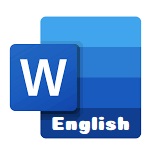Author Guidelines
- The author must send the manuscript online by first registering as an author to the website. Register here.
- The article should be original-scientific paper, has never been published, and is not under review in other journals.
- The article should be written either in Bahasa Indonesia or in English.
- The article is formatted in Ms. Word and in A4 paper with Garamond of font 12 with 1.15 space and single column format. Justify alignment is in 10 to 15 pages.
- It is suggested to use of reference manager, such as Mendeley.
- Article Format has met the Article Template of Al-Aulia: Jurnal Pendidikan dan Ilmu-Ilmu Keislaman.
- References used in the article should be at least 15 articles which published in the last ten years.
The author must follow the following Article Organization:
- Article Title
Article Title (Center, Bold, Initial Capitalized, Font Size 14 Spacing 1 Maximum 15 Words Font Garamond)
- Author’s Name and Affiliation
The author’s name must be written completely without a title and professional positions. Also, the affiliation of the author must be written clearly under the author’s name. Affiliation includes a name of department/unit, and name of university. Please indicate the Corresponding Author (include email address) by adding an email behind the name. Author’s name and affiliation is written in bold (for author’s name) and regular (for affiliation) Garamond of 11 pt, Bold, centered type.
- Abstract
Abstract written briefly. Abstract reviews briefly, concisely and clearly regarding the background of the research, research objectives, research methods, research results and conclusions. In Indonesian and English if the article is in Indonesian, and enough in English if the article is in full English, the abstract is written in the form of one paragraph, the length of the abstract is between 50-150 words. (Italic, Garamond font, Font Size 10, spaced 1 paragraph left-right aligned)
- Introduction (Bold, Times New Roman Font, Font Size 12, 1.5 spacing)
(First line 0.75). Number of article pages 10-30. This template is provided to assist authors in formatting manuscripts that will be sent to the Al-Aulia Journal: Journal of Islamic Education and Sciences. Authors can copy paste their writing in this template. To copy-paste text from the source, please use the 'Paste Special' facility in 'Microsoft Word' and select 'Unformatted Text' to preserve the text and paragraph formatting in this template. The template for this article format was created in MS Word, and then saved in doc or docx format. The body of the text uses Times New Roman font, font size 12 and 1.5 spacing.
The content of the background of the research problem explains "Why is this research needed or carried out?". The research problem begins with the researcher's concern about the phenomena that occur in their environment and is a reality found in the field (das sein) which looks different from what is expected (das sollen). The introduction is about 2-3 pages long and typed with 1.5 spaces, spacing before 0 pt, after 0 pt.
- Methodology (Bold, Times New Roman Font, Font Size 12, 1.5 spacing)
The research methodology includes several sub-chapters, namely: type of research, research method, place and time of research, subject and object of research, population and sample, data collection techniques, and data analysis techniques.
For qualitative research, it is necessary to add the presence of researchers, research subjects, informants who help along with ways to explore research data, location and duration of research as well as a description of checking the validity of research results.
- Results and Discussions (Bold, Times New Roman Font, Font Size 12, 1.5 spacing)
The research results presented in this section are “clean” results. Data analysis processes such as statistical calculations and hypothesis testing processes do not need to be presented. Only the results of the analysis and the results of hypothesis testing need to be reported. Tables and graphs can be used to clarify the presentation of research results verbally. Tables and graphs should be commented on or discussed.
For qualitative research, the results section contains detailed sections in the form of sub-topics that are directly related to the research focus and categories.
The discussion in the article aims to: (1) answer the problem formulation; (2) shows how the findings were obtained; (3) interpret or interpret the findings; (4) linking research findings with established knowledge structures; (5) bring up new theories or modifications of existing theories.
Tables: simple and centered on a few ideas. The table must be identified (in the form of a table number and name) and placed above the table. This is intended to facilitate the referral.
Tables quoted from other sources must be accompanied by an explanation of the author's last name, year of publication, and the page number of the original table below the table. If notes are needed to explain certain items in the table, use certain symbols and write them in superscript form. Footnotes for the table are placed below the table.
Table 1
Graduate Involvement in Programs
Staff Development
|
Activity |
The Role of Graduates |
Relevance |
|||||
|
P |
Pb |
Pan |
Pl |
R |
TSR |
TR |
|
|
% |
% |
% |
% |
% |
% |
% |
|
|
Seminars (90,0%) *) |
57,8 |
65,6 |
40,0 |
31,1 |
46,1 |
51,9 |
Ttd |
|
In-service upgrading/training (78,9%) |
31,1 |
50,0 |
21,1 |
3,3 |
57,6 |
28,8 |
10,0** |
|
Workshop (70,0%) |
34,4 |
34,4 |
22,2 |
8,9 |
53,3 |
40,7 |
Ttd |
|
Course (38,9%) |
6,7 |
6,7 |
5,5 |
Ttd |
66,7 |
27,8 |
Ttd |
|
Other activities (13,3%) |
24,4 |
14,4 |
14,4 |
6,4 |
Ttd |
3,1 |
Ttd |
Notes:
P = Participants TR = Not very relevant
Pb = Speaker TR = Unrelevant
Pan = TTD Committee = No data available
PL = Other roles R = Relevant
*) The numbers in brackets indicate the percentage of graduates who gave answers.
**) Another 10% of the participants in this activity stated that it was not relevant to their area of expertise. The reasons given include the fact that the courses offered are sometimes very different from the field of expertise the new graduates acquire in their education abroad. (font times new roman, font size 10, spacing 1.5)
Graphics: refers to photos, graphs, charts, sketch maps, diagrams and other visuals. Images can present data in visual forms that can be easily understood. Some of the guidelines for the use of images put forward are (1) the title of the image is placed below the image. The method of writing image titles is the same as writing table titles, (2) images must be simple to convey ideas clearly and can be understood without having to be accompanied by textual explanations, (3) the mention of images should precede the image, (4) images are referred to by using numbers, not by using the word picture above or picture below, and (5) pictures are numbered using Arabic numerals.
Meanwhile, for each acronym and abbreviation it is necessary to provide a description of the length, such as: iB (Islamic Bank). Do not use abbreviations or acronyms in article titles unless it is unavoidable.
The writing of the reference list must be dominated by primary sources in the form of scientific journal articles published in the last 10 years. Minimum references 15. Minimum 80% of references are from primary literature/scientific journals.
Reference is a list of written works that the author reads in preparing the article and then uses it as a reference. In scientific articles, references must exist as a complement to references and reference sources. Reference writing follows the rules in this guide, which is APA 6th style. Reference writing must use an automatic citation application (mendeley zetero and the like. For Al-Aulia: Journal of Islamic Education and Sciences using bodynote references (citations in the text).
- Conclusions (Bold, Times New Roman Font, Font Size 12, 1.5 spacing)
The conclusion of the study relates to the discussion of the results of the analysis. In this section, the researcher presents the essence and main points of the research findings that may not only answer the research question but are still within the scope of the research problem. The presentation of conclusions must use language or statements that are easy to understand.
- Bibliography (Bold, Times New Roman Font, Font Size 12, 1.5 spacing)
References are all sources that become a reference for an author in his activities of writing a scientific work. These sources must be compiled in a list commonly referred to as References. Reference to Al-Aulia: Jurnal Pendidikan dan Ilmu-Ilmu KeIslaman Refers to the writing system APA 6th. Bibliography contains of minimum 80% or 15 primary referenced sources or journals that published in the last 10 years. All references mentioned in the article must be listed in the bibliography. It is suggested to use of reference manager such as Mendeley.
Example: More details can be seen in the format below, as a guide for writing references:
Akpan, J. ., & Beard, L. (2014). Assistive technology and mathematics education. Journal of Educational Research, 2(3), 219–222.
Asfaroh, J ., Rosana, D., & Supahar. (2017). Development of CIPP model of evaluation instrument on the implementation of project assessment in science learning. International Journal of Environmental and Science Education, 12(9), 1999–2010.
Hadjichristou, C. (2008). A Comparative study on math’s education rendered in the two communities on the Island of Cyprus. International Journal Of Environmental & Science Education, 2(2), 38–43.
Hasselbring, T ., & Bausch, M. (2006). Assistive technologies for reading. Educational Leadership, 63(4), 72–75.
Hasselbring, T. , & Glaser, C. H. (2000). Use of computer technology to help students with special needs. Children and Computer Technology, 10(2), 102–122.
McCarthy, P., & Shevlin, M. (2017). Opportunities and challenges in secondary education for blind/vision-impaired people in the Republic of Ireland. Disability and Society, 32(7), 1007–1026. https://doi.org/10.1080/09687599.2017.1337564
Mensah, F. (2017). Ghanaian senior high school students’ error in learning of trigonometry. International Journal Of Environmental & Science Education, 12(8), 1709–1717.
National Council of Teachers of Mathematic (NCTM). (2000). Principle and Standards for School Mathematics. NTCM.
Wong, M ., & Cohen, L. (2011). School, family and other influences on assistive technology use: Access and challenges for students with visual impairment in Singapore. British Journal of Visual Impairment, 29(2),130–144.






